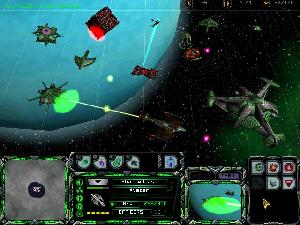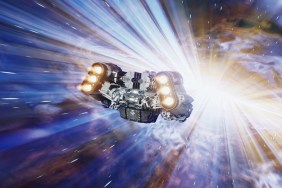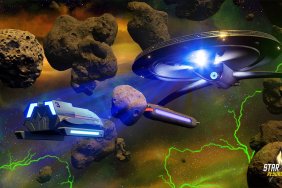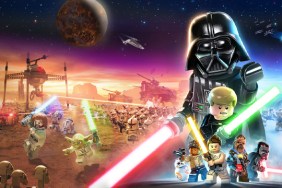Kill the tribbles and save the whales.
Star Trek always seems to be at it’s kooky best when the characters and co-starring
hardware jump back through some sort of ‘Temporal Disruption’ and play around
in the past, free of 12 Monkeys-esque consequences. Star
Trek IV did it well (Captain, there be whales here! Where’s me harpoons?
– Ed.). First Contact handled it decently. Now, Activision’s
new real time strategy game Star Trek: Armada takes a nose dive into
the pool of ridicule and delivers one of the most hilariously overblown Star
Trek plot-lines since the tribbles took over the Enterprise.
The Borg are invading, led by a clone of Locutus (Captain Picard, assimilated
edition). Rebel Klingon factions are vying for the position of ultimate cheeseball.
Romulans are scheming. And the Federation is stoically fighting to the last
man, only to go back in time for the ultimate do-over and get it right. From
story to play mechanics, Star Trek: The Next Generation has been warped
and manipulated into a very entertaining, pretty, and slightly shallow strategy
title. The end result is one of the better uses of the Star Trek license in
recent memory.
Single-player Armada plays out through 5 campaigns: (in order) Federation,
Klingon, Romulan, Borg, and then everyone together against the Borg. The setup
is essentially warring starfleets in space.
Unlike Homeworld, Armada‘s 3D space is really
just a graphical effect. Although ships can occupy different positions on the
Z-axis, control, camera, and combat dynamics are all based on a 2D grid in space.
Asteroid belts provide impassable barriers. Nebulae provide a variety of negative
and positive effects, and combined with Wormholes, Black Holes, and a few scattered
planets, make the big empty into a vibrant RTS battlefield.
Most missions involve building up a base, amassing a fleet and going to war.
At times, Armada plays out like Dark Reign
(the development team’s most recent game) in space, although missing much of
the depth.
Each side’s ships and structures roughly correspond in terms of weaponry and
strength. That means, unrealistically, that a single Sovereign (Enterprise-E)
class ship is an even match for a Borg cube (both of which can be built en
masse in a matter of minutes, sacrificing plausibility for gameplay). Technology
research introduces special abilities to the ships, which is where the species
primarily differ. A cube equipped with an assimilation beam is more than a match
for a plain vanilla Sovereign.
Crew is the great innovation in Armada. Each ship and station has crew on board. Damaged ships lose crew and ship performance decreases as crew is lost. When all are gone, the ship becomes a derelict. Other ships or stations can beam crew onto a derelict ship or any ship whose shields are down, and if crew is beamed onto a hostile, populated ship, the crew battle it out until control is taken. The Borg, with their assimilation technology, have an easier time taking enemy ships and stations. Dilithium (the stuff that powers warp drives and apparently can be mined from conveniently placed, blueish moons) makes up the other resource.
Although Armada‘s units are not as customizable in terms of AI as Dark
Reign, there are no large deficiencies here. In most missions, unfortunately,
enemy forces don’t put up too much of a fight. Their tenacity increases, as
is usual for an RTS, in the skirmish mode (single-player with computer controlled
opponents).
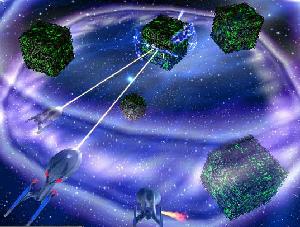 The
The
similarity of the sides, despite the special abilities, does make the gameplay
fairly repetitive. Most missions in Armada are decided by strength of
numbers, which makes for a fun, flashy game that won’t hold your attention for
too long with complex strategies. But it does manage to keep you coming back
for more after you tire of deeper fare.
A good portion of Armada‘s appeal lays in the excellent graphics. The
3D engine flawlessly portrays the ships from the STTNG universe and fills the
battlefield with fireworks displays of phasers, disrupters and photon torpedoes.
A small window in the on-screen interface shows battles from cinematic angles.
You can also switch the main camera into a more 3D ‘Director’ mode, which makes
it nearly impossible to command your forces, but looks terrific. Texturing,
special effects, lighting, and other bells and whistles practically make Armada
look like the opening battle from First Contact.
One especially nice, subtle effect is that during construction of stations and ships, you see the construction pods building them polygon by polygon. Armada‘s mix of 2D mechanics and 3D graphics is one of the best compromises of dimensions in RTS games today.
The sound is all true to the Star Trek movies and series and several of the actors are on board for voice acting duties. Music tends to be slightly tinny and repetitive, but overall Armada is a good audio/visual experience.
The main failings of Armada, aside from the lack of depth, are stability and compatibility. The game is prone to crash to the desktop roughly every 30 minutes, which makes the player somewhat paranoid about saving. Armada also has compatibility problems with a variety of graphics card chipsets such as the Nvidia TNT which, at press time, still have not been resolved.
There is no denying that Armada is the rare Star Trek game which gets most of it right. Star Trek realism is sacrificed successfully for well-balanced RTS gameplay and the result is a straightforward, enjoyable game that should appeal to everyone except strategy grognards and rabid Trekkies. But hell, who needs those people anyway? All energy to weapons, red alert.
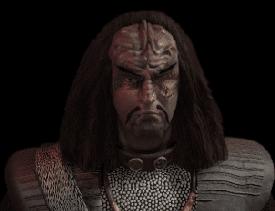
-
A fun Star Trek game!
-
Solid gameplay
-
Excellent graphics
-
Smooth interface
-
Not much depth
-
Could use some time in the shop
